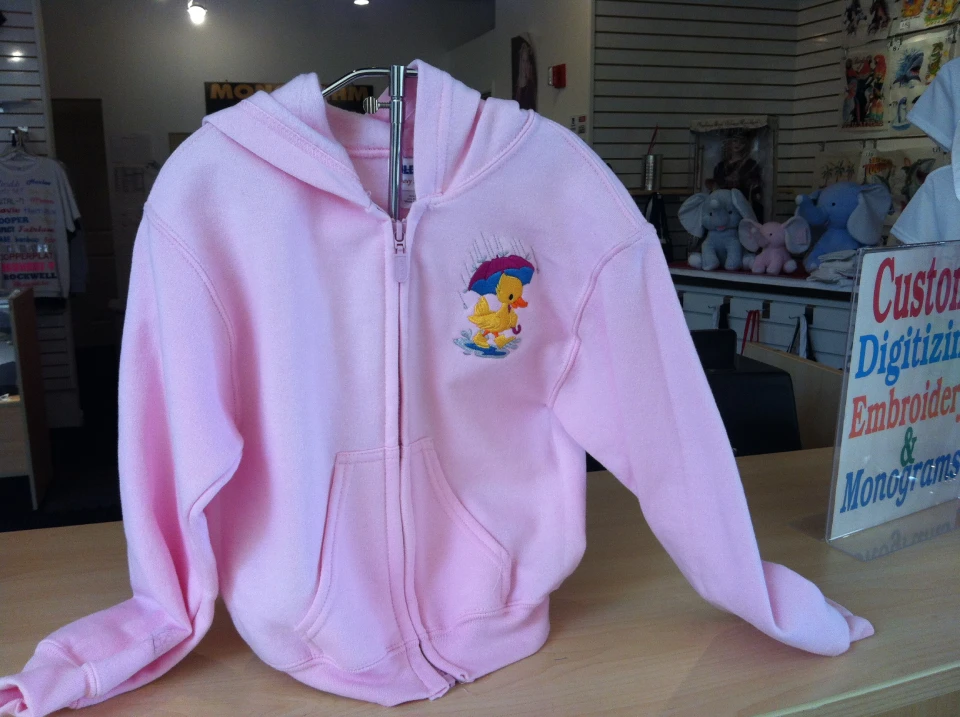The Art of Custom-made Embroidery: Unlocking the Tricks to Creating One-of-a-kind and Remarkable Layouts
The secrets to developing custom needlework styles that captivate the eye and leave a lasting impression lie in a fragile equilibrium of technique, creative thinking, and attention to detail. As we delve right into the world of customized embroidery, we uncover the nuanced interaction between string choice, sew complexity, and style customization that elevates a plain garment to a job of art.
Picking the Right Needlework Threads
When choosing needlework threads, what vital factors should you consider to guarantee the very best outcomes for your custom-made styles? The option of embroidery thread is important in figuring out the final outcome of your embroidered style. One of the main factors to consider is the material of the thread. Various products such as cotton, polyester, rayon, and silk provide varying levels of sheen, sturdiness, and appearance. It is vital to pick a string product that complements the material you are embroidering on and lines up with the wanted appearance of the layout.
Thicker threads can add measurement and structure to your design, while finer threads are suitable for elaborate details and little message. Furthermore, thinking about the shade fastness and washability of the string is important to make sure that your customized layouts preserve their quality and vibrancy over time.
Checking Out Various Stitch Strategies
To explore the realm of 'Exploring Various Stitch Methods', one need to realize the ins and outs and subtleties that each sewing technique brings to the art of embroidery. Different stitch methods not only add aesthetic interest but additionally add to the overall structure and dimension of the layout. One prominent stitch strategy is the satin stitch, which includes very closely jam-packed parallel stitches to create a smooth and shiny surface area, ideal for completing shapes and developing strong outlines.
On the various other hand, the backstitch is a versatile technique often made use of for detailing and adding fine information. It involves sewing backward to develop a solid line of needlework. In addition, the French knot stitch adds a tactile element to layouts, perfect for developing textured accents like blossom centers or ornamental touches.
Exploring various stitch techniques allows embroiderers to play with light, darkness, and deepness within their designs, elevating the visual charm and artistic high quality of their embroidery tasks. By understanding different sewing approaches, one can unlock endless opportunities for producing unique and unforgettable customized needlework items.
Incorporating Personalized Design Aspects
Having actually discovered the ins and outs of various stitch techniques such as the satin stitch, backstitch, and French knot, the emphasis currently moves towards integrating customized design components in custom-made embroidery jobs. Personalized layout elements play a vital role in making needlework jobs truly one-of-a-kind and memorable. One way to integrate personalization is by including initials, names, or considerable dates to the style. This not just includes a personalized touch yet also boosts the nostalgic value of the needlework item.
Another way to integrate customized design elements is by consisting of symbols basics or motifs that hold special definition to the recipient or show their rate of interests and individuality. Integrating a favored blossom, animal, or hobby-related symbol can make the embroidery design much more significant and personalized. Furthermore, choosing shades that reverberate with the recipient or align with the desired style can additionally enhance the personalization of the needlework project.
Grasping the Art of Color Control

One secret aspect of color sychronisation is comprehending shade theory. This consists of recognizing how various colors interact with each other, the emotions they convey, and exactly how they can be integrated to create visually attractive layouts. By using shade concept principles, embroiderers can develop harmonious shade schemes that enhance the overall look of the style.
Furthermore, taking note of contrast try this is critical in shade coordination. Utilizing contrasting colors can help particular components of the style pop, enhance readability, and develop an aesthetically vibrant embroidery piece. By understanding the art of color sychronisation, embroiderers can elevate their designs and develop memorable pieces that resonate with clients and visitors alike.
Enhancing Texture With Advanced Embroidery Stitches
French knots, for instance, are excellent for adding tiny, increased dots to your style, resembling the look of grains or producing a distinctive surface area. Bullion knots, on the other hand, can be used to produce twisted, ropelike components that add an elegant feeling to the embroidery. Seed stitching involves small, scattered stitches that can complete areas with a speckled appearance, while turkey job produces cosy, dimensional accents similar to pet hair or vegetation. Try out these advanced embroidery stitches allows you to push the limits of traditional needlework and create absolutely unique and visually attractive textures in your designs.
Conclusion
To conclude, the art of customized needlework entails a mix of picking the best strings, checking out different stitch strategies, integrating individualized style elements, grasping shade sychronisation, and boosting texture with innovative find this stitches. By comprehending and executing these crucial elements, embroiderers can produce one-of-a-kind and remarkable styles that showcase their creative thinking and skill. Needlework lovers can open the keys to creating beautiful and custom items that stand apart and leave an enduring perception.